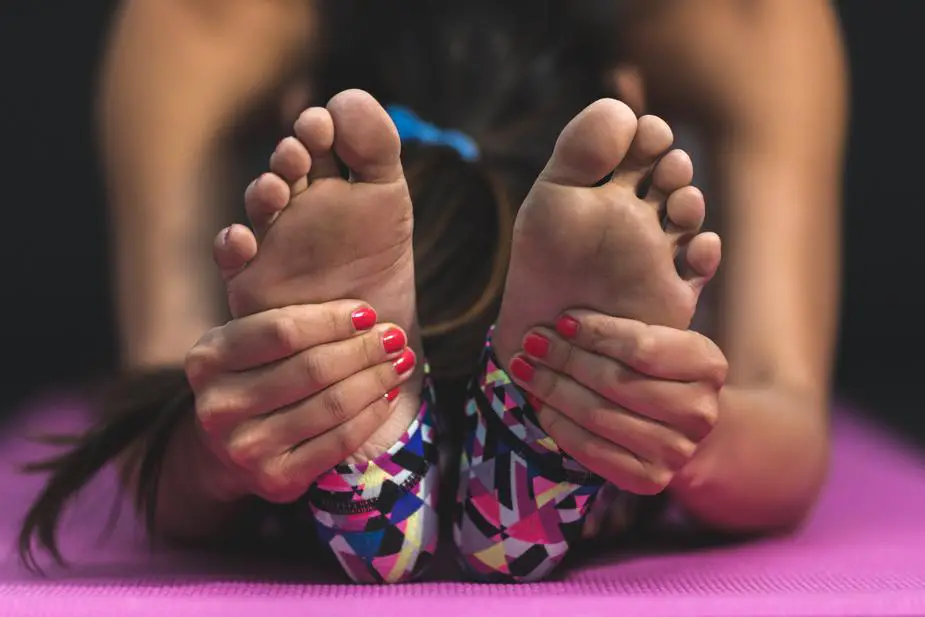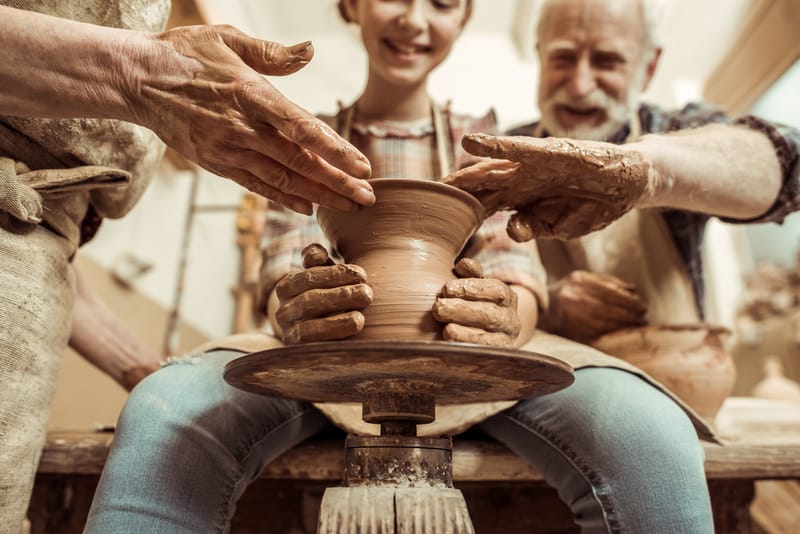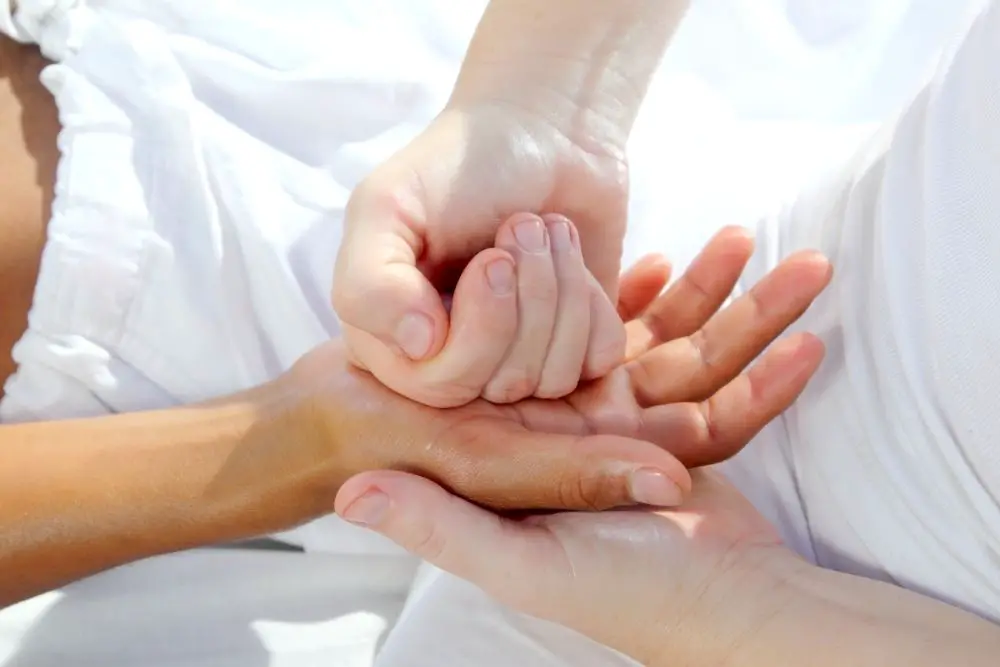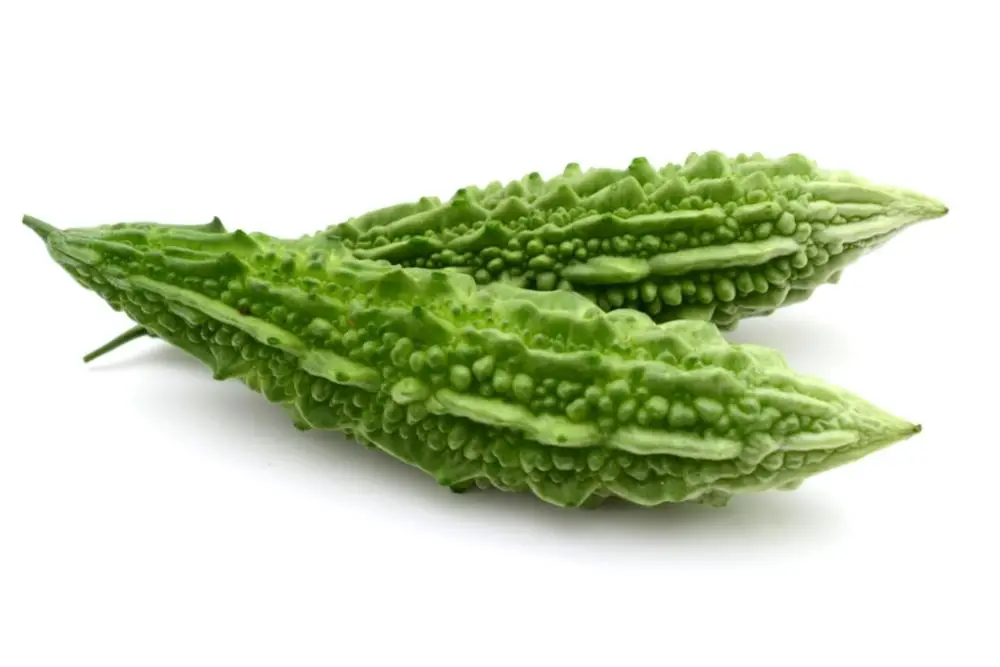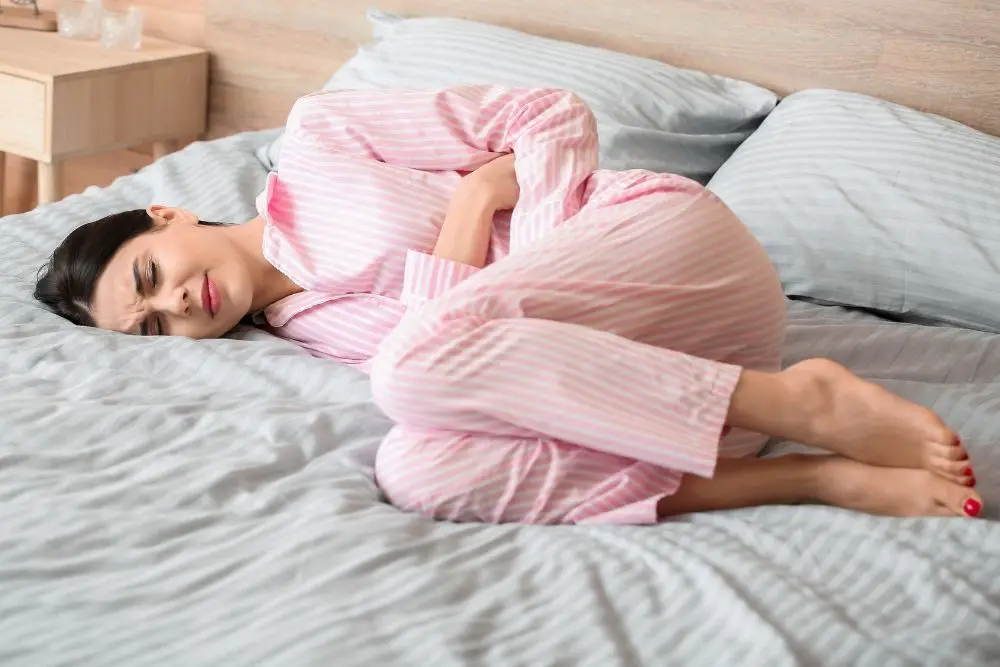Acupressure uses the same basic principle as acupuncture; this is why acupressure is sometimes also referred to as pressure acupuncture or needle-less acupuncture. The main goal of the treatment is to promote relaxation, restore energy balance, and treat various diseases.
The Theory behind Acupressure
Traditional Chinese Medicine theory describes the existence of numerous acupressure points located along the meridians or channels in the human body. Those invisible channels are where life force or vital energy – traditionally known as qi or ch’i (氣) flows. Both acupuncture and acupressure target the same points to deliver the treatment. At least 12 major meridians are connecting networks of organs and organizing a complex system of communications between organs as well. The theory, therefore, suggests that illnesses may occur when any of the meridians is blocked or out of balance. Acupressure is one of many other traditional treatment methods to improve the conditions.
Acupressure is nothing new. It is an ancient form of massage in Traditional Chinese Medicine and now practiced all over the world as a DIY-approach home treatment and complementary therapy applied by professionals.
Major Benefits
According to a publication by Johns Hopkins Medicine, acupressure – which is essentially an alternate form of acupuncture – is an effective treatment on its own or in combination with the more conventional therapies to treat the following conditions:
- Headache
- Addiction
- Lower back pain
- Asthma
- Osteoarthritis
- Dental pain (after surgery)
- Nausea
- Tennis elbow
- Carpal tunnel syndrome
- Fibromyalgia
- Menstrual cramps
- Myofascial pain syndrome
Acupressure may also help with anxiety, stress, pain, and cancer-related nausea and fatigue, according to Michigan Medicine. While acupressure still requires plenty of high-quality studies to confirm its efficacy, the existing evidence, in general, provides strong support for the therapy.
Six Highly Effective Acupressure Points In Feet And Ankles
There are hundreds of acupressure points throughout the human body. It may take you years to memorize every single one of them, but you can always start by exploring a small number of major spots. Many of these important points locate at the crossroads of multiple meridians; in other words, they affect massive networks of organs and provide widespread benefits when appropriately treated. Among these important points, you can find six highly effective acupressure points in feet and ankles.
Acupoint: ST-36 (Other Names: Stomach-36/Zu San Li/Leg Three Miles)
Mostly targeted to stimulate health and promote longevity, Zu San Li is a highly respected acupressure point because ancient practitioners believed that it could treat all diseases. Acupressure therapy focused on this point can repair and re-establish digestive energy both in the stomach and spleen. Zu San Li treatment relieves all sorts of digestive issues, including but not limited to diarrhea, abdominal pain, constipation, bloating, and swelling. It can even improve conditions caused by arthritis and aging.
How to find it: Zu San Li locates on the lateral side of the leg below the knee. It is about four-finger space below the patella, in the depression of tibia.

Acupoint: Bl-40 (Other Names: Urinary Bladder-40/Wei Zhong/Middle of the Crook)
Bl 40 acupuncture point is one of the commonly targeted acupressure points in feet and ankles to help relieve tiredness or fatigue due to muscle spasms, sprains, leg pain, hip pain, or knee stiffness. Bladder Cavity point also improves skin diseases (such as inflammation and itching) as well as arthritis and fever symptoms.
How to find it: Wei Zhong point locates in the center of the horizontal stripes behind the knees or popliteal crease. You can find the point easily when you flex the knees slightly.
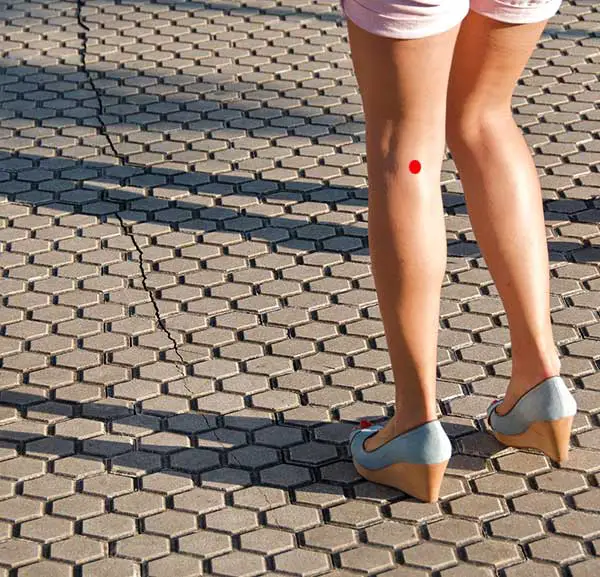
Acupoint: Liv-3 (Other Names: Liver-3/Tai Chong/Supreme Rush)
The acupressure point targeted to treat stress, anxiety, high blood pressure, lower back pain, limb pain, insomnia, and menstrual pain. Traditional Chinese Medicine believes that illnesses occur because the flow of energy is suppressed. As a result, the patient easily gets irritated, anxious, or suffers from mood swings. Tai Chong helps release the suppressed energy and nourishes the connected meridians.
How to find it: you need to take off your shoes to find Tai Chong. It locates between the big toe and the second toe. Put a finger in between the toes, slide along the space, and stop just before your finger touches the metatarsal joint.
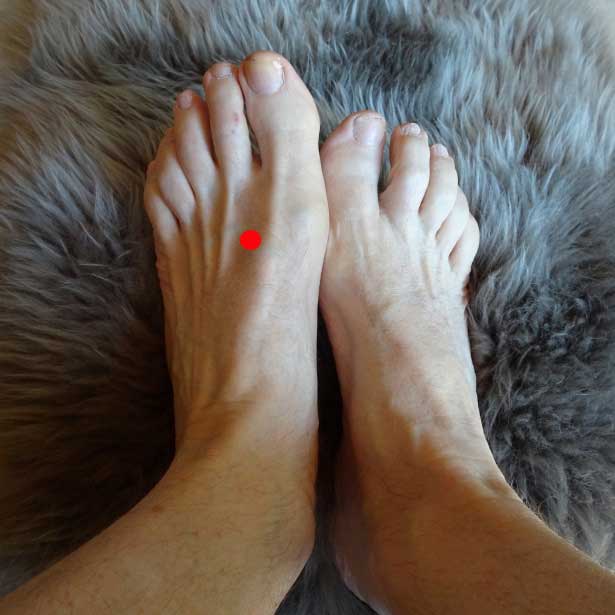
Acupoint: GB-34 (Other Names: Gallbladder-34/Yang Ling Quan/Yang Mound Spring)
The point mostly benefits the sinews or tough tissues, including ligaments and tendons, and therefore it is targeted to treat stiffness and tensions in muscle and joints. Another important function is to prevent insomnia, migraine, and anxiety. Yang Ling Quan is equally effective as a treatment for digestive problems such as vomiting and bitterness in the mouth.
How to find it: it is on the lateral side of the lower leg just below the knee, in the depression anterior and inferior to the head of the fibula.

Acupoint: SP-6 (Other Names: Spleen-6/San Yin Jiao/Three Yin Intersection)
Among all acupressure points in feet and ankles, San Yin Jiao is usually targeted to treat insomnia, menstrual cramps, pelvic, and urological disorders. Various health problems can start at the point, for example, urinary imbalances, sexual imbalances, digestive issues, emotional imbalances, and gynecological diseases. Just remember that San Yin Jiao may induce labor, so you should not target the point during pregnancy.
How to find it: San Yin Jiao is located on the inside of the leg above the ankle. To find the exact spot, first, you need to locate the highest peak of the ankle and place four fingers across the leg above the peak; the acupressure point is directly above the topmost finger.
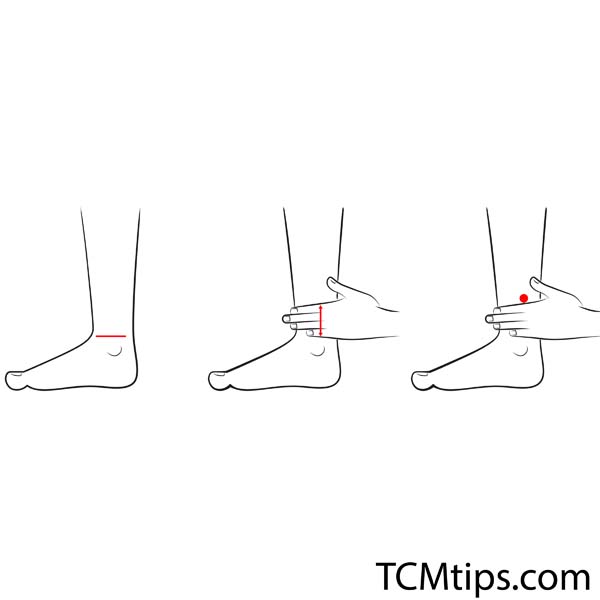
Acupoint: KI-1 (Other Names: Kidney-1/Yong Quan/Gushing Spring)
Yong Quan is one of the most helpful acupressure points to connect your energy with the Earth’s. It is targeted to treat pain in the neck, headache, hip pain, dizziness, and even loss of consciousness. It can induce comfort in case you are frightened or anxious about something. The acupressure point may be useful in treatment for mental disorders, according to the Alberta College of Acupuncture & Traditional Chinese Medicine. You can also stimulate Kl-1 to prevent hair loss.
How to find it: Yong Quan is located on the sole. You can find it more easily when the foot is in plantar flexion – or slightly extended so that the arches activate – about one third the distance from toes to heel.
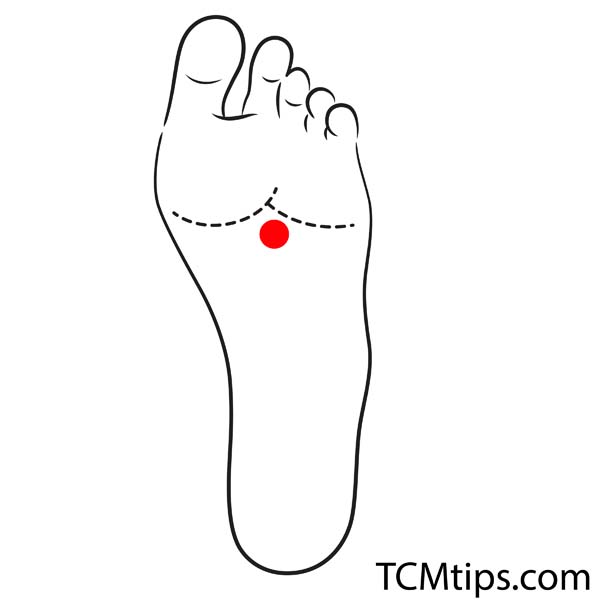
Related Reading:
- Do acupressure slippers work? This is what I learned
- 6 Best Acupoints Of Acupuncture For Sprained Ankle According to Experts
- What Is It Like To Use Foot Reflexology For Plantar Fasciitis

Try our Anti-Aging Gua Sha Tool designed to bring out your skin’s natural glow.
Best Gua Sha Product- Anti-Aging: The tool is designed to target 11 specific aging signs such as wrinkles and sagging skin. By following the 7-step routine, users can improve skin firmness and reduce fine lines naturally.
- Enhances Skincare Routine: It works effectively with serums and lotions, boosting absorption and efficacy of skincare products.
- Visible Skin Improvement: Users can expect a smoother complexion, reduced puffiness, and a more youthful appearance.
 P. Sze
P. Sze 